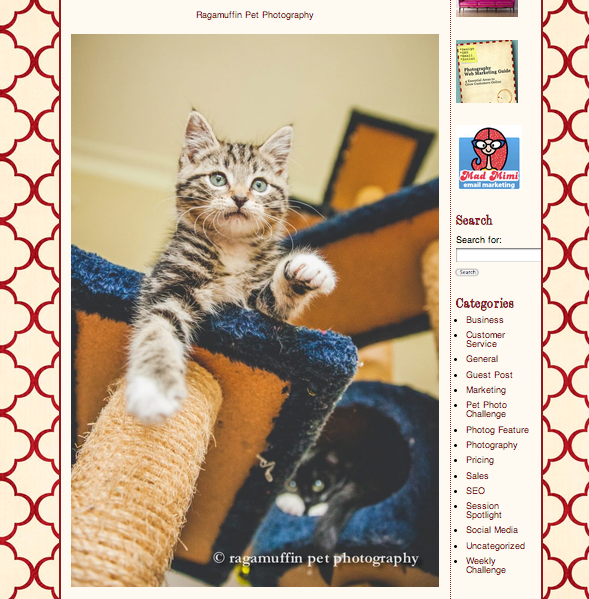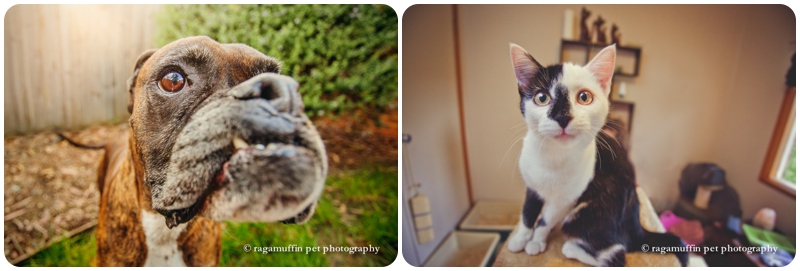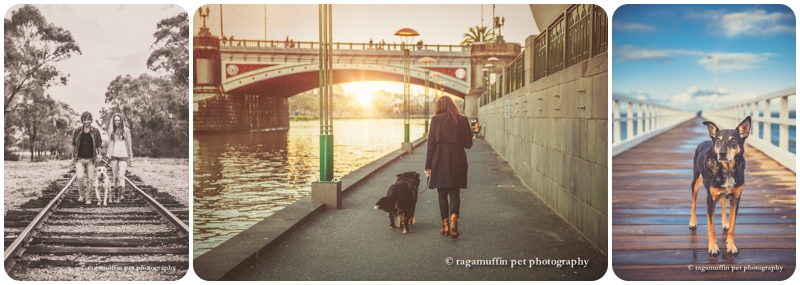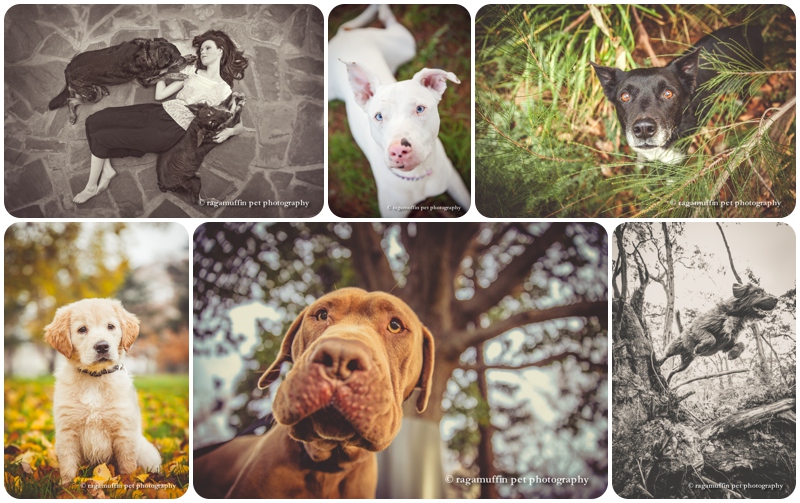5 Tips for Interesting Perspectives in Pet Photography
{Plus - Featured! on the Top 10 Blog}
Ragamuffin Pet Photography has been featured in the Hair of the Dog Top 10 collection of pet photographs shot with an interesting perspective! Click here to see the whole collection, featuring some awesome pet photographers all around the world!
Perspective plays an important role in professional photography. Creatively playing with angles and depth within an image can make the difference between an average photograph and a winner. Read on for 5 tips and techniques for introducing a sense of interesting perspective in your own pet photography . . .

Perspective in photography is technically the sense of depth or spatial relationships between objects in the photograph. For example, the distance between the kitten's paws reaching down towards the lens, to the kitten's face, right up towards the top levels of the cat tower.
1. Lens Choice
Your choice of lens and focal length can have a dramatic effect on the perception of depth within your photo. The kitten photo was shot with a 24mm focal length, which helped exaggerate the apparent distance between the top platform and our kitty.
Basically, a wide angle lens distorts both the relative size and the distance between your near and far objects. This makes anything close to your lens look big and anything further away look tiny and distant (caused by the angle of view). You can take advantage of this to create comically distorted pet portraits with the big head, little body effect with very wide angle lenses, or even a fisheye lens.

2. The Diminishing Effect
This is one of the easiest ways to create depth in your image. Essentially the diminishing effect works because our brains recognise that the same object, when placed further away, appears smaller. So if you find a pattern in your shooting environment (e.g. a long row of trees, a staircase, a brick wall - or even a cat tower) you can use that pattern to demonstrate depth and perspective within the photograph.

3. Overlap Perspective
Ok, so this one is just common sense, but you can still use it to your advantage in your pet photography. When an object blocks or overlaps another object, our brains understand that the first object is closer than the latter (duh). For example - the kitten is clearly closer to the camera than the cat tower platforms because she overlaps them.
It's simple, but when you combine the concept of overlap perspective with several of these other perspective tips then you can create a really interesting portrait. Try intentionally overlapping objects in front of the dog or cat to create more depth in your frame.

4. Depth of Field
Speaking of depth. Our eyes are accustomed to not being able to clearly view objects that are far away (some more so than others *adjusts her glasses*). Utilising your depth of field can emphasize the perspective within a photograph. Vary your aperture and focus in on a particular aspect of your shot (e.g. I focused on the kitty at f/2.8 and allowed both her paw and the rest of the cat tower to fall away into blurriness).

5. Change your angle
I've saved the best for last - change your camera angle and your portfolio will love you for it! Far too many people photograph pets from their own eye level. This means the animals are always looking up at the camera - it's a cute shot that emphasizes puppy-dog eyes, but it can be uninteresting because it's the same angle that we see our pets from in our day-to-day life. You can combine the angle with a couple of the other techniques mentioned in this blog post to add interest - or you can move yourself around to find a whole new perspective.
To shoot the featured kitten photograph, I was lying on my back, looking straight up at the kitty. I was balancing the camera by pressing it hard against my face, with one hand gripped on the shutter and my other hand playing with a feathered toy to grab her attention.
I spend most of my sessions crouched down in awkward positions or lying on my belly. I want to get down to the pet's level, so that I can photograph them eye-to-eye. Occasionally I will roll over on my back so that I can photograph from beneath the pet's level (side note: do not become a pet photographer if you are squeamish about getting dirty or muddy). Photographing from beneath the animal, looking up, can create either an epic-hero stance or a comic, playful pose (like the kitty).
Interesting photographs can also be achieved by photographing down from a high level (I'm not talking human-eye level, I mean something more like a bird's eye view).
Definitely play around with your angles!

Above all else, just experiment with your camera and don't be afraid to roll around in the leaves like a lunatic. If you've found this post interesting or useful, be sure to leave a comment below and click here to subscribe to the Ragamuffin Pet Photography newsletter.
